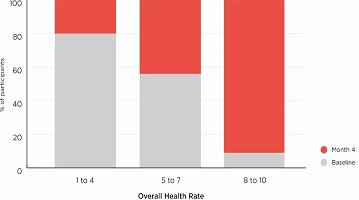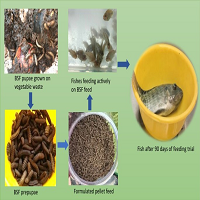1. Chomel BB, Sun B. Zoonoses in the bedroom. Emerg Infect Dis. 2011; 17: 167-172. doi: 10.3201/eid1702.101070
2. The Statistics Portal. Number of cats in the United States from 2000 to 2017/2018. Website. https://www.statista.com/statistics/198102/cats-in-the-united-states-since-2000/. Accessed May13, 2017.
3. Chomel BB. Emerging and re-emerging zoonoses of dogs and cats. Animals. 2014; 4: 434-445. doi: 10.3390/ani4030434
4. Hemsworth S, Pizer B. Pet ownership in immunocompromised children – a review of the literature and survey of existing guidelines. Eur J Oncol Nurs. 2006; 10: 117-127. doi: 10.1016/j.ejon.2005.08.001
5. Rabinowitz PM, Natterson-Horowitz BJ, Kahn LH, Kock R, Pappaioanou M. Incorporating one health into medical education. BMC Med Educ. 2017; 17: 45. doi: 10.1186/s12909-017-0883-6
6. Chomel BB, Boulouis H-J, Maruyama S, Breitschwerdt EB. Bartonella spp. in pets and effect on human health. Emerg Infect Dis. 2006; 12: 389-394. doi: 10.3201/eid1203.050931
7. Fleischman DA, Chomel BB, Kasten RW, et al. Bartonella infection among cats adopted fom a San Fransisco shelter, revisited. Appl Environ Microbiol. 2015; 81: 6446-6450. doi: 10.1128/AEM.01864-15
8. Mazur-Melewska K, Mania A, Kemnitz P, Figleowicz M, Stuzewski W. Cat-scratch disease: A wide spectrum of clinical pictures. Postepy Dermatol Alergol. 2015; 32: 216-220. doi: 10.5114/pdia.2014.44014
9. Nelson CA, Saha S, Mead PS. Cat-scratch disease in the United States, 2005-2013. Emerg Infect Dis. 2016; 22: 1741-1746. doi: 10.3201/eid2210.160115
10. Sykes JE, Blondeau JM. Pradofloxacin: A novel veterinary fluoroquinolone for treatment of bacterial infections in cats. Vet J. 2014; 201: 207-214. doi: 10.1016/j.tvjl.2014.06.008
11. Breitschwerdt EB. Bartonellosis, one health and all creatures great small. Vet Dermatol. 2017; 28: 96-e21. doi: 10.1111/vde.12413
12. Giordano A, Dincman T, Clyburn BE, Steed L, Rockey DC. Clinical features and outcomes of Pasteurella multocida infection. Medicine. 2015; 94 (36): e1285. doi: 10.1097/MD.0000000000001285
13. Dolieslager SM, Riggio MP, Lennon A, et al. Identification of bacteria associated with feline chronic gingivostomatitis using culture-dependent and culture-independent methods. Vet Microbiol. 2011; 148: 93-98. doi: 10.1016/j.vetmic.2010.08.002
14. Ferreira TS, Felizardo MR, de Gobbi DD, Moreno M, Moreno AM. Antimicrobial resistance and virulence gene profiles in P. multocida strains isolated from cats. Braz J Microbiol. 2015; 46: 271-277. doi: 10.1590/S1517-838246120140084
15. Wilson BA, Ho M. Pasteurella multocida: From zoonosis to cellular microbiology. Clin Microbiol Rev. 2013; 26: 631-655. doi: 10.1128/CMR.00024-13
16. Adler AC, Cestero C, Brown RB. Septic shock from Pasteurella multocida following a cat bite: Case report and review of literature. Conn Med. 2011; 75: 603-605.
17. Narsana N, Farhat F. Septic shock due to Pasteurella multocida bacteremia: A case report. J Med Case Rep. 2015; 9: 159. doi: 10.1186/s13256-015-0643-3
18. Hey P, Gow P, Torresi J, Testro A. Cirrhosis, cellulitis and cats: A ‘purrfect’ combination for life-threatining spontaneous bacterial peritonitis from Pasteurella multocida. BMJ Case Rep. 2012. doi: 10. 1136/bcr-2012-007397
19. Sykes JE. Pediatric feline upper respiratory disease. Vet Clin North Am Small Anim Pract. 2014; 44: 331-342. doi: 10.1016/j.cvsm.2013.10.005
20. Wernli D, Emonet S, Schrenzel J, Harbath S. Evaluation of eight cases of confirmed Bordetella bronchiseptica infection and colonization over a 15-year period. Clin Microbiol Infect. 2011;17: 201-203. doi: 10.1111/j.1469-0691.2010.03258.x
21. Redelman-Sidi G. Grommes C, Papanicolaou G. Kittentransmitted Bordetella bonchiseptica infection in a patient receiving temozolomide for glioblastoma. J Neurooncol. 2011; 102: 335-339. doi: 10.1007/s11060-010-0322-6
22. Registrar KB, Sukumar N, Palavecino EL, Rubin BK, Deora R. Bordetella bronchiseptica in a pediatric cystic fibrosis patient: Possible transmission from a household cat. Zoonoses Public Health. 2012; 59: 246-250. doi: 10.1111/j.1863-2378.2011.01446.x
23. Mattoo S, Cherry JD. Molecular pathogenesis, epidemiology, and clinical manifestations of respiratory infections due to Bordetella pertussis and other Bordetella subspecies. Clin Microbiol Rev. 2005; 18: 326-382. doi: 10.1128/CMR.18.2.326-382.2005
24. Dlamini NR, Bhamjee A, Levick P, Uniacke E, Ismail H, Smith A. Spontaneous bacterial peritonitis and pneumonia caused by Bordetella bronchiseptica. J Infect Dev Ctries. 2012; 6: 588-591. doi: 10.3855/jidc.2074
25. Rampelotto RE, Horner A, Horner C, Righi R, Horner R. Pneumonia caused by Bordetella bronchiseptica in two HIV positive patients. Sao Paulo Med J. 2016; 134: 268-272. doi: 10.1590/1516-3180.2015.02492701
26. Wareth G, Melzer F, El-Diasty M, et al. Isolation of Brucella abortus from a dog and a cat confirms their biological role in re-emergence and dissemination of bovine brucellosis on dairy farms. Transbound Emerg Dis. 2016; doi: 10.1111/tbed.12535
27. Repina LP, Nikulina AI, Kosilov IA. A case of human infection with brucellosis from a cat [In Russian]. Zh Mikrobiol Epidemiol Immunobiol. 1993; (4): 66-68.
28. Truong LQ, Kim JT, Yoon B, Her M, Jung SC, Hahn T. Epidemiological survey for Brucella in wildlife and stray dogs, a cat and rodents captured on farms. J Vet Med Sci. 2011; 73: 1597-1601. doi: 10.1292/jvms.11-0222
29. Gage KL, Dennis DT, Orloski KA, et al. Cases of catassociate human plague in the western US, 1977-1988. Clin Infect Dis. 2000; 30: 893-900. doi: 10.1086/313804
30. Kassem AH, Tengelsen L, Atkins B, et al. Notes from the field: Plague in domestic cats – Idaho, 2016. MMWR Morb Mortal Wkly Rep. 2016; 65: 1378-1379. doi: 10.15585/mmwr.mm6548a5
31. Svedhem A, Norkans G. Campylobacter jejuni enteritis transmitted from cat to man. Lancet. 1980; 1: 713-714. doi: 10.1016/S0140-6736(80)92862-7
32. Svedhem A, Kaijser B. Isolation of Campylobacter jejuni from domestic animals and pets. Probable origin of human infection. J Infect. 1981; 3: 37-40. doi: 10.1016/s0163-4453(81)92261-1
33. Hill SL, Cheney JM, Tton-Allen GF, Reif JS, Bruns C, Lappin MR. Prevalence of enteric zoonotic organisms in cats. J Am Vet Med Assoc. 2000; 216: 687-692. doi: 10.2460/javma.2000.216.687
34. Andrzejewska M, Szczepanska B, Klawe JJ, Spica D, Chudzinska M. Prevalence of Campylobacterjejuni and Campylobacter coli species in cats and dogs from Bydgoszcz (Poland) region. Pol J Vet Sci. 2013; 16: 115-120. doi: 10.1016/S0163-4453(81)92261-1
35. Sandberg M, Begsio B, Hofshagen M, Skjerve E, Kruse H. Risk factors for Campylobacter infection in Norwegian cats and dogs. Prev Vet Med. 2002; 55: 241-253. doi: 10.1016/S0167-5877(02)00095-8
36. Maunder CL, Reynolds ZF, Peacock L, Hall EJ, Day MJ, Cogan TA. Campylobacter species and neutrophilic inflammatory bowel disease in cats. J Vet Intern Med. 2016; 30: 996-1001. doi: 10.1111/jvim.14374
37. Spain CV, Scarlet JM, Wade SE, McDonough P. Prevalence of enteric zoonotic agents in cats less than 1 year old in central New York State. J Vet Intern Med. 2001; 15: 33-38. doi: 10.1111/j.1939-1676.2001.tb02294.x
38. Gargiulo A, Rinaldi L, D’Angelo L, et al. Survey of Campylobacter jejuni in stray cats in southern Italy. Lett Appl Microbiol. 2008; 46: 267-270. doi: 10.1111/j.1472-765X.2007.02295.x
39. Damborg P, Olsen KE, Moller Nielsen E, Guardabassi L. Occurrence of Campylobacter jejuni in pets living with human patients infected with C. jejuni. J Clin Microbiol. 2004; 42: 1363-1364. doi: 10.1128/JCM.42.3.1363-1364.2004
40. Acke E, McGill K, Golden O, Jones BR, Fanning S, Whyte P. Prevalence of thermophilic Campylobacter species in household cats and dogs in Ireland. Vet Rec. 2009; 164: 44-47. doi: 10.1136/vr.164.2.44
41. Giacomelli M, Follador N, Coppola LM, Martini M, Piccirillo A. Survey of Campylobacter spp. in owned and unowned dogs and cats in Northern Italy. Vet J. 2015; 204: 333-337. doi: 10.1016/j.tvjl.2015.03.017
42. Handt LK, Fox JG, Dewhirst FE, et al. Helicobacter pylori isolated from the domestic cat: Public health implications. Infect Immun. 1994; 62: 2367-2374. doi: 10.1128/iai.62.6.2367-2374.1994
43. Boomkens SY, Kusters JG, Hoffman G, et al. Detection of Helicobacter pylori in bile of cats. FEMS Immunol Med Microbiol. 2004; 42: 307-311. doi: 10.1016/j.femsim.2004.06.002
44. Canejo-Teixeira R, Oliveira M, Pissarra H, Niza MM, Vilela CL. A mixed population of Helicobacterpylori, Helicobacter bizzozeronii and Helicobacter heilmannii in the gastric mucosa of a domestic cat. Irish Vet J. 2014; 67: 25. doi: 10.1186/2046-0481-67-25
45. Loon SV, BartA, Hertog EJD, Nikkels PGJ, Houwen RHJ. Helicobacter heilmannii gastriis caused by cat to child transmission. J Pediatr Gastroenterol Nutr. 2003; 36: 407-409. doi: 10.1097/00005176-200303000-00021
46. Shojaee Tabrizi A, Jamshidi SH, Oghalaei A, et al. Identification of Helicobacter spp. in oral secretions vs. gastric mucosa of stray cat. Vet Microbiol. 2010; 140: 142-146. doi: 10.1016/j.vetmic.2009.07.019
47. De Groote D, Van Doorn LJ, Van den Bulck K, et al. Detection of non-pylori Helicobacter species in “Helicobacter heilmannii”-infected humans. Helicobacter. 2005; 10: 398-406. doi: 10.1111/j.1523-5378.2005.00347.x
48. Weber A, Wachowitz R, Weigl U, Schafe-Schmidt R. Occurrence of Salmonella in fecal samples of dogs and cat in northern Bavaria from 1975 to 1994. Berl Munch Tierarztl Wochenschr. 1995; 108: 401-404.
49. Carter ME, Quinn PJ. Salmonella infections in dogs and cats. In: Wray C, Wray A, eds. Salmonella in Domestic Animals. Wallingfod, Oxfordshire, UK: CAB International; 2000: 231- 244.
50. Van Immerseel F, Pasmans F, De Buck J, et al. Cats as a risk for transmission of antimicrobial drug-resistant Salmonella. Emerg Infect Dis. 2004; 10: 2169-2174. doi: 10.3201/eid1012.040904
51. Abraham S, O’Dea M, Trott DJ, et al. Isolation and plasmid chaecterization of carbapenemases (IMP-4) producing Salmonella enterica Typhimurium from cats. Sci Rep. 2016; 6: 35527. doi: 10.1038/srep35527
52. Srisanga S, Angkititrakul S, Sringam P, Ho PT, Vo PT, Chuanchuen R. Phenotypic and genotypic antimicrobial resistance and virulence genes of Salmonella enterica isolated from pet dogs and cats. J Vet Sci. 2016; Sep 1. [Epub ahead ofprint]
53. Gaastra W, Lipman LJ. Capnocytophaga canimorsus. Vet Microbiol. 2010; 140(3-4): 339-346. doi: 10.1016/j.vetmic.2009.01.040
54. Lloret A, Egberink, Addie D, et al. Capnocytophaga canimorsus infection in cats: ABCD guidelines on prevention and management. J Feline Med Surg. 2013; 15: 588-590. doi: 10.1177/1098612X13489220
55. Suzuki M, Kimura M, Imaoka K, Yamada A. Prevalence of Capnocytophaga canimorsus and Capnocytophaga cynodegmi in dogs and cats determine by using a newly established speciesspecific PCR. Vet Microbiol. 2010; 144: 172-176. doi: 10.1016/j.vetmic.2010.01.001
56. Janda JM, Graves MH, Lindquist D, Probert WS. Diagnosing Capnocytophaga canimorsus infections. Emerg Infect Dis. 2006; 12: 340-342. doi: 10.3201/eid1202.050783
57. Yamamoto U, Kunita M, Mohri M. Shock following a cat scratch. BMJ Case Rep. 2013; 3013. doi: 10.1136/bcr-2012-007892
58. Jackson CR, Davis JA, Frye JG, Barrett JB, Hiott LM. Diversity of plasmids and antimicrobial resistance genes in multidrug-resistant Escherichia coli isolated from healthy companion animals. Zoonoses Public Health. 2015; 62: 479-488. doi: 10.1111/zph.12178
59. Kawamura K, Sugawara T, Matsuo N, et al. Spread of CTX type extended-spectrum β-lactamase-producing Escherichia coli isolates of epidemic clone B2-O25-ST131 among dogs and cats in Japan. Microb Drug Resist. 2017; doi: 10.1089/mdr.2016.0246
60. Pesciaroli M, Alvarez J, Boniotti MB, et al. Tuberculosis in domestic animal species. Res Vet Sci. 2014; 97: S78-S85. doi: 10.1016/j.rvsc.2014.05.015
61. Gunn-Moore DA, McFarland SE, Brewer JI, et al. Mycobacterial disease in cats in Great Britain: 1. Culture results, geographical distribution and clinical presentation of 339 cases. J Feline Med Surg. 2011; 13: 934-944. doi: 10.1016/j.jfms.2011.07.012
62. Gunn-Moore DA, Gaunt C, Shaw DJ. Incidence of mycobacterial infections in cats in Great Britain: Estimate from feline tissue samples submitted to diagnostic laboratories. Transbound Emerg Dis. 2013; 60: 281-290. doi: 10.1111/j.1865-1682.2012.01352.x
63. Roberts T, O’Connor C, Nunez-Garcia J, de la RuaDomenech R, Smith NH. Unusual cluster of Mycobacterium bovis infection in cats. Vet Rec. 2014; 174: 326. doi: 10.1136/vr.102457
64. Gibbens N. Disinfection procedures and TB in cats. Vet Rec. 2014; 174: 455-456. doi: 10.1136/vr.g3006
65. Ramdas KE, Lyashchenko KP, Greenwald R, RobbeAusterman S, McManis C, Waters WR. Mycobacterium bovis infection in humans and cats in same household. Emerg Infect Dis. 2015; 21(3): 480-483. doi: 10.3201/eid2103.140715
66. Tan RE, Yee WX, Cao DYH, Tan PL, Koh TS. Zoonotic Streptococcus canis infection in Singapore. Singapore Med J. 2016; 57: 218. doi: 10.11622/smedj.2016077
67. Lacave G, Coutard A, Troche G, et al. Endocarditis caused by Streptococcus canis: An emerging zoonoses? Infection. 2016; 44: 111-114. doi: 10.1007/s15010-015-0809-3
68. Taniyama D, Abe Y, Sakai T, Kikuchi T, Takahashi T. Human case of bacteremia caused by Streptococcus canis sequence type 9 harboring the scm gene. ID Cases 2017; 7: 48-52. doi: 10.1016/j.idcr.2017.01.002
69. Hariharan H, Matthew V, Fountain J, et al. Aerobic bacteria from mucous membranes, ear canals, and skin wounds of feral cats in Grenada, and the antimicrobial drug susceptibility of major isolates. Comp Immunol Microbiol Infect Dis. 2011; 34: 129-134. doi: 10.1016/j.cimid.2010.05.001
70. Verkuhlen G, Pagelow D, Valentin-Weigand P, Fulde M. SCM-positive Streptococcus canis are predominant among pet-associated group G streptococci. Berl Munch Tierararztl Wochenschr. 2016; 129: 247-250.
71. Reitmeyer JC, Guthrie RK, Steele JH. Multiplication in human blood and deoxyribonuclease production by group G streptococci isolated from animals and humans. Microbios. 1990; 61: 33-37.
72. Reitmeyer JC, Guthrie RK, Steele JH. Biochemical properties of group G streptococci isolated from cats and man. J Med Microbiol. 1991; 35: 148-151. doi: 10.1099/00222615-35-3-148
73. Bramble M, Morris D, Tolomeo P, Lautenbach E. Potential role of pet animals in household transmission of methicillin resistant Staphyloccus aureus: A narrative review. Vector Borne Zoonotic Dis. 2011; 11: 617-620. doi: 10.1089/vbz.2010.0025
74. Bierowiec K, Ploneczka-Janeczko K, Rypul K. Prevalence and risk factors of colonization with Staphylococcus aureus in healthy pet cats kept in the city households. Biomed Res Internat. 2016; 2016: 3070524 doi: 10.1155/2016/3070524
75. Davis JA, Jackson CR, Fedorka-Cray PJ, et al. Carriage of methicillin-resistant staphylococci by healthy companion animals in the US. Lett Appl Microbiol. 2014; 59: 1-8. doi: 10.1111/lam.12254
76. Wipf JR, Perreten V. Methicillin-resistant Staphylococcus aureus isolated from dogs and cats in Switzerland. Schweiz Arch Tierheilkd. 2016; 158: 443-450. doi: 10.17236/sat00070
77. Walther B, Wieler LH, Vincze S, et al. MRSA variant in companion animals. Emerg Infect Dis. 2012; 18: 2017-2020. doi: 10.3201/eid1812.120238
78. Rossi CC, da Silva Dias I, Muniz IM, Lilenbaum W, Giambiagi-deMarval M. The oral microbiota of domestic cats harbors a wide variety of Staphylococcus species with zoonotic potential. Vet Microbiol. 2017; 201: 136-140. doi: 10.1016/j.vetmic.2017.01.029
79. De Cock HEV, Marks SL, Stacy BA, et al. Ileocolitis associated with Anaerobiospirillum in cats. J Clin Microbiol. 2004; 42: 2752-2758. doi: 10.1128/JCM.42.6.2752-2758.2004
80. Schaumburg F, Dieckmann R, Schmidt-Braklding T, Becker K, Idelevich EA. First description of an Anaerobiospirillum succiniproducens prosthetic joint infection. New Microbe New Infect. 2017; 18: 1-2. doi: 10.1016/j.nmni.2017.03.001
81. Petersson E, Athlin S. Cat-bite-induced Francisella tularensis infection with a false-positive serological reaction for Bartonella quintana. JMM Case Rep. 2017; 4: doi: 10.1099/jmmcr.0.005071
82. Parola P. Rickettsia felis: from a rare disease in the USA to a common cause of fever in sub-Saharan Africa. Clin Microbiol Infect. 2011; 17: 996-1000. doi: 10.1111/j.1469-0691.2011.03516.x
83. Giudice E, Di Pietro S, Alaimo A,. et al. A molecular survey of Rickettsia felis in fleas from cats and dogs in sicily (Southern Italy). PLoS One. 2014; 9: e106820. doi: 10.1371/journal.pone.0106820
84. Egberink H, Addie D, Belak S, et al. Coxiellosis/Q fever in cats: ABCD guidelines on prevention and management. J Feline Med Surg. 2013; 15: 573-575. doi: 10.1177/1098612X13489216
85. Shapiro AJ, Norris M, Bosward KL, Heller J. Q Fever (Coxiella burnetii) Knowledge and attitudes of Australian cat breeders and their husbandry practices. Zoonosis Public Health. 2017; 64: 252-261. doi: 10.1111/zph.12305
86. Siciliano RF, Castelli JB, Mansur AJ, et al. Bartonella spp. and Coxiella burnetii associated with community-acquired, culture negative endocarditis, Brazil. Emerg Infect Dis. 2015; 21(8): 1429-1432. doi: 10.3201/eid2108.140343
87. Lee JJ, Kim DH, Lim JJ, et al. Characterization and identification of Erysipelothrix rhusiopathiae isolated from an unnatural host, a cat, with clinical manifestation and depression. J Vet Med Sci. 2010; 73: 149-154. doi: 10.1292/jvms.10-0248
88. Talan DA, Citron DM, Abrahamian FM, Moran GJ, Goldstein EJC; Emergency Medicine Animal Bite Infection Study Group. Bacteriological analysis of infected dog and cat bites. New Engl J Med. 1999; 340(2): 85-92. doi: 10.1056/NEJM199901143400202






